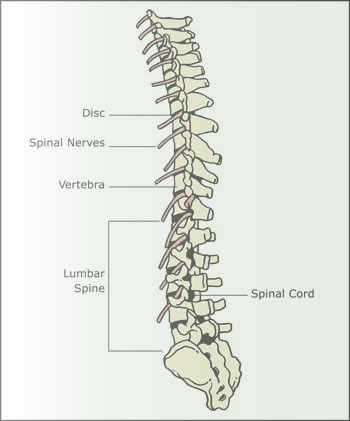Anatomy of the Spine
The spine serves many roles in human anatomy. It allows for erect posture and provides a protective, bony column for the spinal cord, support for the head and arms, as well as muscles, ribs and organs. Disruption of this delicate balance of form and function occurs with improper alignment, degenerative disc disorders, disease, trauma, or the presence of other pathological conditions.
The Vertebrae
The human backbone (spine) is made up of bones called vertebrae. The vertebrae are stacked on top of each other to form the spinal column, which is held together by ligaments and muscles attached to the vertebrae by bands of tissue called tendons. Between each of the vertebral bodies is a cushion known as a disc. Openings at the back of each vertebra line up to form a long, hollow bony canal. The spinal cord runs from the base of the brain through this protective canal and nerves branch out through the spaces between the vertebrae. Essentially, the spinal cord serves as a highway for signals from the brain that control most bodily functions, such as movement and sensation.
The lower part of the back (lumbar spine) holds most of the body’s weight. Even a minor problem with the bones, muscles, ligaments or tendons in this area can cause pain when you stand, sit, bend, move or walk around. The Bremer Group Company products are designed to focus and treat this area of the spinal column.

